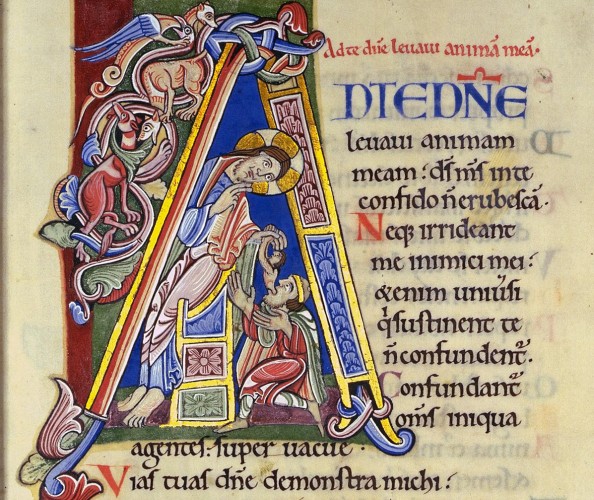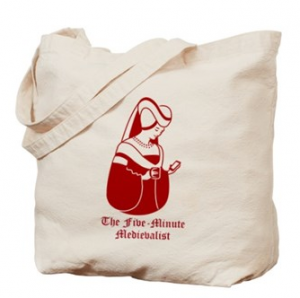By Danièle Cybulskie
http://www.medievalists.net/2015/08/what-is-a-psalter/
Although much of the European population in the Middle Ages was illiterate, their faith was heavily based on religious texts. As James B. Tschen-Emmons remarks in Artifacts from Medieval Europe, “Christianity is a religion closely associated with books.” (p.227) Indeed, it was largely in religious houses that books were copied and kept, and it was the church that taught the populace how to access these books by teaching them to read. One of the most frequently-copied and shared books was the psalter.
Psalters were (as the name suggests) books that contained the Book of Psalms from the Bible. Because they didn’t contain the entire Bible, psalters were nice and portable, making good girdle books for the devout – or those concerned with showing off – to carry with them. (Anne Boleyn owned a particularly beautiful and tiny psalter in the sixteenth century.) The psalms contain a little bit of everything in them, and they are short, self-contained passages which were easier to discuss and contemplate than the entire Bible all at once. For this reason, the psalms were excellent teaching tools for beginning readers learning Latin.
As Michael Lapidge notes, children entering the monastery would memorize the psalms as part of their learning of the Divine Office, and move from there to learning Latin as a language (Latin Psalter Manuscripts in Trinity College Dublin and the Chester Beatty Library, p.20). Because the psalms were such a vital part of the service, the laity listening would have picked up on the words, as well (whether or not they understood them), and the wealthy who could own their own psalters could read them in anticipation of the day’s service, or to reflect upon it later. As Tschen-Emmons points out, “Some psalters retained the same divisions, in five books, that the Bible does, but others were organized into seven sections corresponding with the days of the week” (Artifacts, p.228), which made it easy for the laity to incorporate their devotions into their daily lives.
A notable feature of many psalters is the lavish illustration. Given that psalters were teaching aids for monastic students, as well as young nobles who were receiving an education, pictures were a helpful device for students struggling with the Latin words on the page. They were also a good jumping-off point for contemplation for people who could already read. Pictures could sometimes illuminate the actual words of the psalm, to mark particularly important psalms (Latin Psalters,p.32), to glorify the person who commissioned the psalter, or – in the case of the Luttrell Psalter – just make the pages interesting (the Luttrell Psalter has given us many beautiful and educational pictures of daily medieval life). Sometimes, as Laura Cleaver mentions, those psalters intended for daily use began to include calendars with religious feasts and saints’ days marked in red or gold (Latin Psalters, p.32), and prayers.
Because psalters contained, at a basic level, the same material, historians can compare them to each other to get a sense of what was important to which owner, where the psalter might have been made, and what the evolving trends of religious devotion were, in terms of iconography and content – even use, if we are lucky enough to find forensic traces of reading (like dirt and fingerprints). As such, psalters, besides being hugely important to the devout people of the Middle Ages, are a treasure trove for historians interested in medieval Christianity and education.
For a solid introduction to psalters, filled with beautiful images, check out Laura Cleaver’s and Helen Conrad O’Brien’s Latin Psalter Manuscripts in Trinity College Dublin and the Chester Beatty Library. For an always-rewarding look at a psalter in cyberspace, check out the British Library’s Luttrell Psalter.
You can follow Danièle Cybulskie on Twitter @5MinMedievalist
















Pentru a putea adăuga comentarii trebuie să fii membru al altmarius !
Alătură-te reţelei altmarius